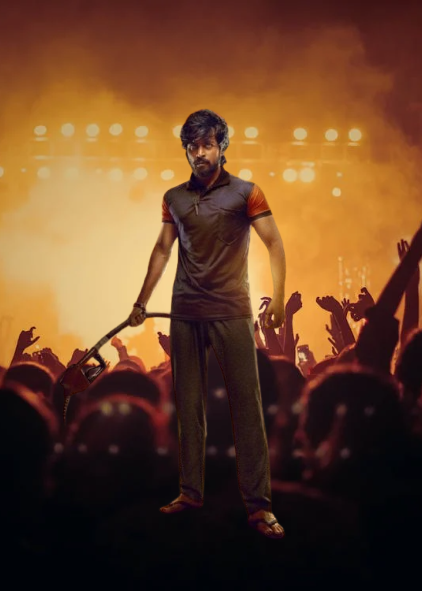Phoenix Movie 2025 Movierulz Review Details

Phoenix (2025) Review: Anl Arasu’s Vision of Grit, Justice, and Redemption
Having covered Tamil cinema for over 15 years, I’ve seen many debut directors attempt to balance emotion with action, but Anl Arasu’s Phoenix (2025) stands out for its intent and intensity. As a stunt master-turned-director, Arasu’s shift from physical choreography to narrative storytelling feels both daring and grounded.
| Overall Rating | Director’s Score |
|---|---|
| 3.5/5 | 4/5 |
This rating’s personal—could change on a director’s cut or rewatch.
Directorial Choices: The Pulse Behind Phoenix
Anl Arasu’s direction thrives in moments of raw emotion and silence. He builds tension through confined spaces — the juvenile reformatory becomes a living organism of violence and fear. His camera often lingers on Surya’s face, forcing the viewer to feel the weight of every accusation, every bruise, every ounce of hope.
As someone who has studied directorial transitions in Tamil action cinema since the late 2000s, I found Arasu’s choices reflective of Murugadoss’s moral lens and Vetrimaaran’s realism. He doesn’t spoon-feed emotion; instead, he lets the chaos unfold naturally.
- Frequent use of over-the-shoulder shots during confrontations
- Minimal dialogue in key emotional scenes to amplify authenticity
- Lighting transitions that mirror Surya’s mental state — from dim despair to bright resistance
Insight: This approach reminds me of Arasu’s earlier choreography work — precise, impactful, yet deeply humane.
Takeaway: The direction breathes life into what could’ve been a generic sports-action narrative.
Influences & Inspirations
There’s a clear nod to Vetrimaaran’s Visaranai and Shankar’s underdog epics. Arasu channels both intensity and empathy, merging commercial pacing with arthouse restraint. The reformatory scenes almost feel documentary-like, capturing youth vulnerability in a world built on political corruption.
As I watched, I could sense influences of classic prison dramas like The Shawshank Redemption — yet, it remains unmistakably Tamil in soul and tone.
| Influence | Impact on Phoenix |
|---|---|
| Vetrimaaran’s Realism | Grounded performances, moral complexity |
| Shankar’s Scale | Stylized action and emotional grandeur |
| Hollywood Prison Dramas | Claustrophobic framing and resilience arcs |
Insight: Arasu blends inspiration with identity, never mimicking — always evolving.
Comparison to Previous Works
While this marks his directorial debut, Anl Arasu’s touch is evident in the kinetic rhythm of action and the controlled emotional pacing. His stunt background enhances the realism of violence, making every punch and fall feel consequential rather than decorative.
| Aspect | Arasu’s Past Work (Stunts) | Phoenix Direction |
|---|---|---|
| Action Design | Stylized and fast-paced | Raw, emotionally driven |
| Emotion Focus | Secondary | Central to narrative |
| Character Movement | Performance-oriented | Emotion-oriented |
Takeaway: The evolution from choreography to character-driven direction is both risky and rewarding.
Director’s Signature Elements
Throughout Phoenix, Arasu establishes certain signatures that could define his future work:
- Physical storytelling — movement reveals inner turmoil
- Muted background score during emotional climaxes to emphasize silence
- Systemic critique — politics, law, and morality intertwine
The decision to cast Surya Sethupathi — a debutant — was an inspired gamble. His performance echoes Arasu’s belief in fresh energy over star power. Varalaxmi Sarathkumar’s Maya injects the film with gravitas, serving as a moral counterweight to Surya’s innocence.
Cast Highlights
| Actor | Character | Notable Scene |
|---|---|---|
| Surya Sethupathi | Surya | Confrontation in the reformatory corridor |
| Varalaxmi Sarathkumar | Maya | Interrogation scene showcasing power play |
| Devadarshini | — | Emotional breakdown post-political reveal |
Insight: Arasu extracts layered performances even from supporting characters, elevating Phoenix beyond its genre constraints.
Balancing Commercial and Emotional Appeal
It’s rare to find a Tamil film that merges mass appeal with moral depth. Arasu achieves this by pacing the film like a sports drama but anchoring it in emotional realism. The balance isn’t always perfect — some action sequences slip into over-stylization — yet the sincerity behind each scene shines through.
- Commercial beats: dramatic slow-motion fights, punch dialogues
- Emotional beats: introspective silences, moral ambiguity
- Technical precision: steady camera work by Velraj
Takeaway: The film proves that mainstream cinema can still ask difficult questions without losing its entertainment quotient.
Director’s Collaboration with Crew
The synergy between Velraj (cinematography) and Sam C S (music) under Arasu’s direction feels organic. The muted color palette and dynamic lighting enhance the grittiness, while Sam C S’s subtle percussion mirrors Surya’s heartbeat through each escape attempt.
| Department | Key Contributor | Impact |
|---|---|---|
| Cinematography | Velraj | Creates texture-rich realism |
| Music | Sam C S | Emotional and tense layering |
| Editing | Jernic | Keeps rhythm tight and urgent |
Insight: Arasu’s collaboration style feels democratic — he empowers his crew, not dominates them.
Conclusion: A Promising Start for Anl Arasu
Phoenix may not be flawless, but it’s a deeply personal film that speaks of survival and integrity. Arasu’s voice as a filmmaker is clear — he’s here to tell stories that hit hard and linger long. With better pacing and tighter scripting, his next venture could easily soar higher.
As a critic who’s followed Tamil cinema’s evolution from Subramaniapuram to Jai Bhim, I’d say Phoenix carries that same fire for social commentary wrapped in action drama aesthetics.
Takeaway: Watch it for the debutant’s energy and the director’s evolving voice — it’s the kind of cinema that builds careers, not just box office numbers.
FAQs
Question 1
What makes Anl Arasu’s direction in Phoenix unique?
Answer 1
His stunt background brings authenticity to action, while his focus on silence and realism adds unexpected emotional weight.
Question 2
Does Phoenix succeed as both an action and emotional drama?
Answer 2
Yes, it balances commercial energy with grounded human conflict, though some sequences feel stretched.
Question 3
Is Phoenix worth watching for its direction alone?
Answer 3
Absolutely — Arasu’s debut showcases a promising vision that blends grit, empathy, and technical confidence.








